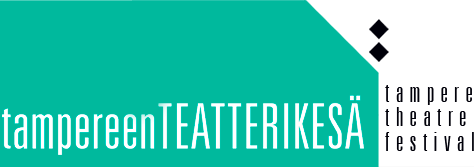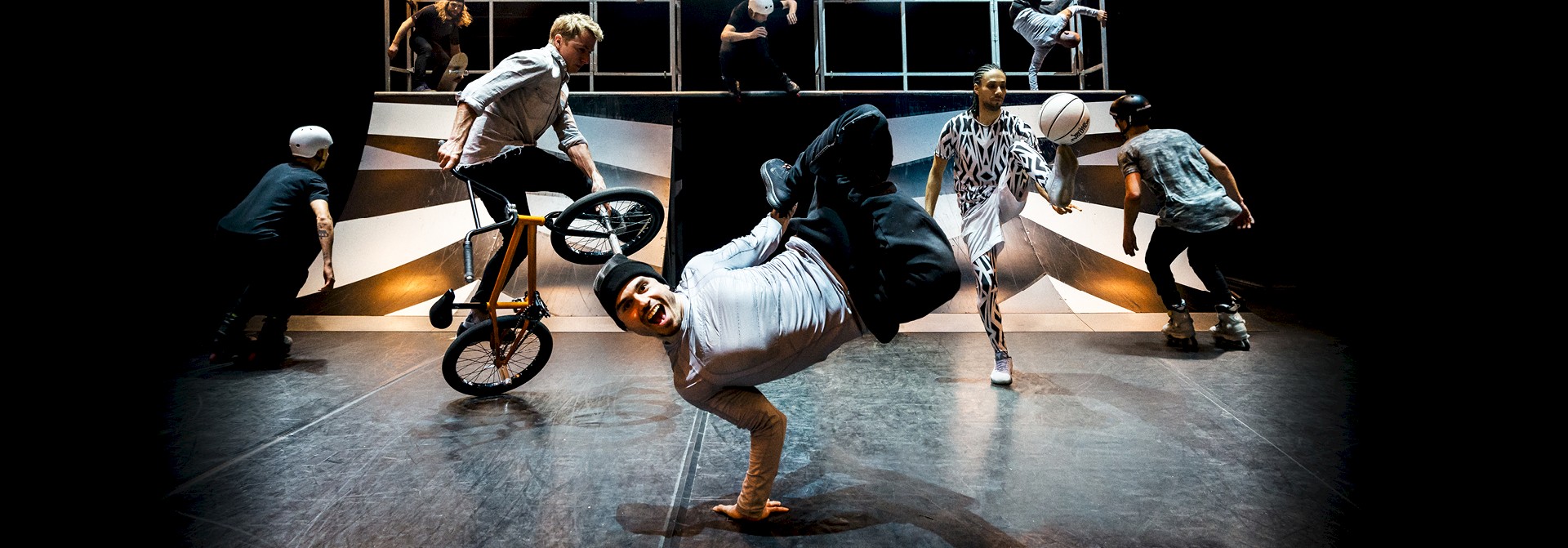Highlights from the Second Press Conference
9.8.2018
The festival week is in full swing, and the second press conference was held on Wednesday. Directors and actors of the mid-week performances presented their pieces, many of which reflect issues of the modern world.
= = = = = = = =
Sardegna Teatro & Compagnia Teatropersona: Macbettu
Macbettu, the Sardinian-language adaptation of Shakespeare’s classic tragedy, is a physical performance honed to perfection. The idea for the production was born when director Alessandro Serra was photographing Sardinian carnivals 10 years ago – he saw the Shakespearean play clearly in his mind's eye. Other central elements of the play are the Sardinian language and the all-male cast which follows the Elizabethan tradition.
The performance may be considered to be physical and minimalistic, but Serra is not sure if ’minimalism’ is the best word to describe it. For him, the actors are the most important part of the performance, so he wants to put special emphasis on them. Similarly, instead of using special lighting effects, Serra wants the lights to dance.
In a way, Macbettu is also a depiction of certain issues of the world today. According to Serra, our inability to accept the supernatural and connect with it is what destroys Macbeth in the end. The play also tackles the issue of not being able to live in the present.
– We are not able to live in the present. For the same reason Macbeth is failing, Serra says.
TTT-Theatre Eino Salmelainen
Wed 8th August at 19:00
Thu 9th August at 16:30
= = = = = = = =
Finnish National Theatre: Old Masters
Old Masters by the Finnish National Theatre is a play based on Thomas Bernhard’s novel. Dramaturg Jukka-Pekka Pajunen says that an art museum is the only right venue for the piece – an ordinary theatre is not a good fit for Old Masters because it is so strongly about art and its different aspects. Dramatisations of Bernhard’s novel have been performed in art museums elsewhere in the world as well.
Old Masters affords the viewer exceptional freedom with regard to interpretation and shifting the point of view if it doesn’t feel right. Everyone is free to form their own interpretation of the performance, and so the audience is free to move around during the performance.
– We don’t force the spectators to stay behind the fourth wall, Pajunen says.
Sara Hildén Art Museum
Thu 9th August at 18:00 (sold out)
Fri 10th August at 18:00 (sold out)
= = = = = = = =
Compañía Kaari & Roni Martin: Anna Karenina
Anna Karenina by Compañía Kaari & Roni Martin is a highly dramatic adaptation of Leo Tolstoy’s classic novel. Kaari Martin says that she has read the touching novel many times – however, instead of making a similarly touching Anna Karenina adaptation, the company wanted to find a different point of view. Thus was born the passionate, flamenco-fuelled performance that’s anchored in the rhythms and movement material of flamenco.
While passionate, the performance is not overly romantic. The performance reflects Tolstoy’s cynical outlook on love: ’Love does not save us.’ This poses problems for the Spanish dancers Mariana Collado and Carlos Chamorro.
– We always threaten them that if there are too many romantic elements, they have to watch six hours of Aki Kaurismäki movies non-stop, Kaari Martin laughs.
– I think what Tolstoy was trying to say is that it’s a modern myth that love saves us and love is enough. Love can also be lonely and it’s not a solution for anything, Atro Kahiluoto says.
Anna Karenina is also a contemporary piece – the historical events covered in the story are connected to the relationship between Finland and Russia. A time of uncertainty, world destruction and escapism are also relevant themes to this day.
TTT-Theatre, Suuri Näyttämö (Main Stage)
Wed 8th August at 17:30
Wed 8th August at 20:00
= = = = = = = =
dollardaddy’s: Chekhov
Chekhov by dollardaddy’s is a uniquely unpredictable mash-up of Anton Chekhov’s classic plays. The Hungarian group is composed of freelance actors who come together to make theatre. According to actor Annamária Láng, the current climate in the Hungarian theatre scene is not easy for the group – they have to fight to be able to even exist.
The inspiration for Chekhov came from director Tamás Ördög’s idea to present Chekhov’s egoistic and selfish characters on stage. Such characters are typical for the group: egoism, cruelty and loneliness are recurring themes in dollardaddy’s performances.
– The characters are in love with themselves. It is a sickness of the modern world, Láng says.
The group is especially known for their intense and intimate acting style. The actors come close to the audience and are forced to bare themselves in a way.
– The most important thing is to come as close to the audience as possible and even be a little bit embarrassing. It’s very difficult for the actors, Láng says.
Pakkahuone
Wed 8th August at 19:30
Thu 9th August at 14:00
= = = = = = = =
Kolmas Tila: The Legend of the Tiny Bone, Part IV Rán
The Legend of the Tiny Bone takes the audience on a journey through time on the wings of Arctic birds, discussing the core of the human condition and existence. Director Juha Malmivaara says that the original idea came from writer Seppo Parkkinen, but Kolmas Tila’s performances always take a long time to brew. The Legend of the Tiny Bone was developed with the help of workshops and public lectures. The workshops also allowed the actors to study and gain profound knowledge on the topic at hand.
The performance combines art and science, which makes the production process vastly different from that of a regular theatre production. The relationship between the performance and the viewer is of central importance.
– When the spectators know something about the topic after taking part in the public lectures, they feel more committed to the piece.
The Legend of the Tiny Bone is not only a beautiful, poetic performance but it also makes a strong ecological statement. Malmivaara says that the text is the most important part of the performance. However, Kolmas Tila does not intend to judge.
– We’re not harbingers of the apocalypse nor do we frighten people with the prospect of a catastrophe. We’re trying to create a broader vision of where we are, where we’re coming from, where we’re going and how we speak of the future. It may have a strong influence on what is actually going to happen, Malmivaara says.
Teatterimonttu
Thu 9th August at 19:00
Fri 10th August at 13:00
Written by Miia Toivari


